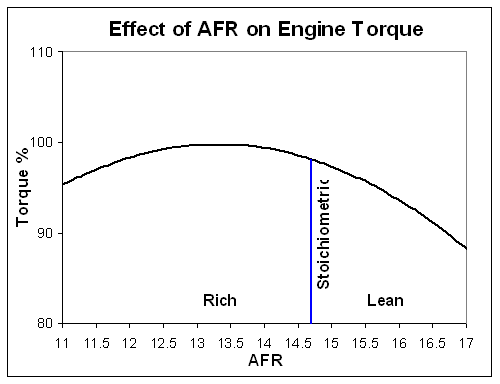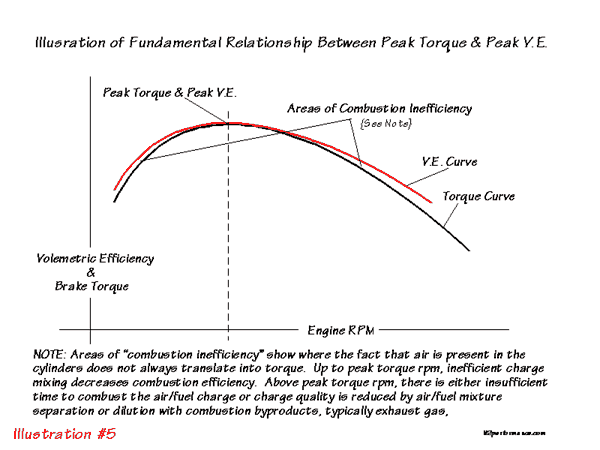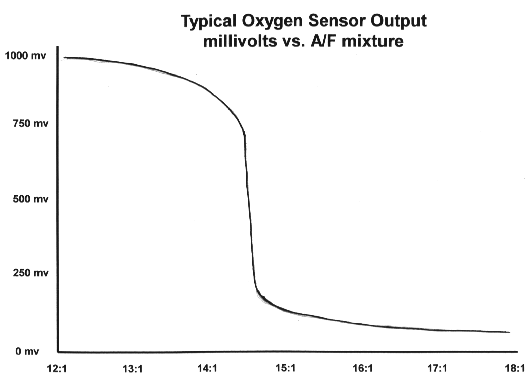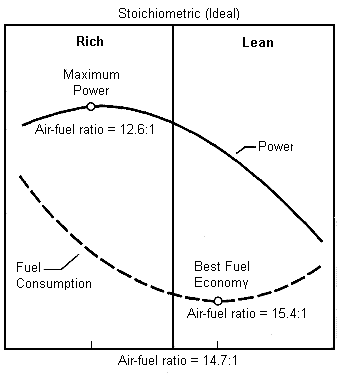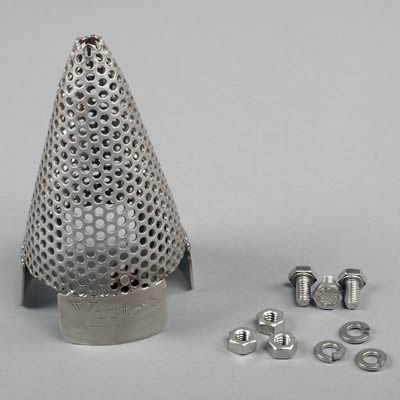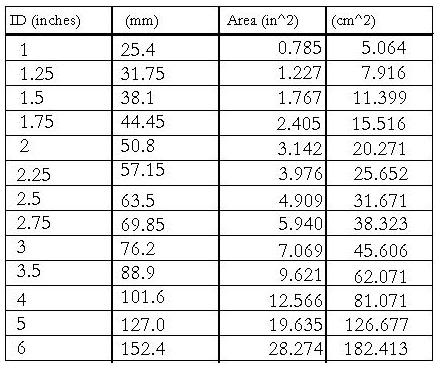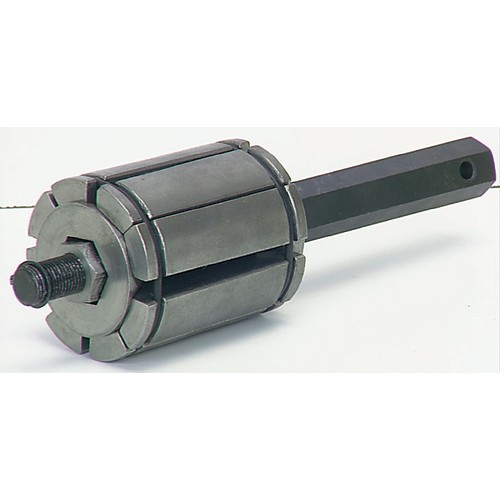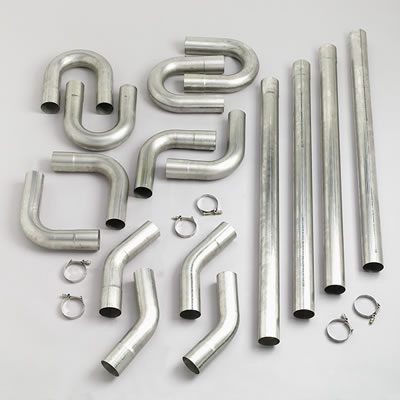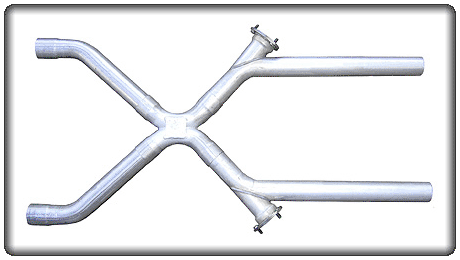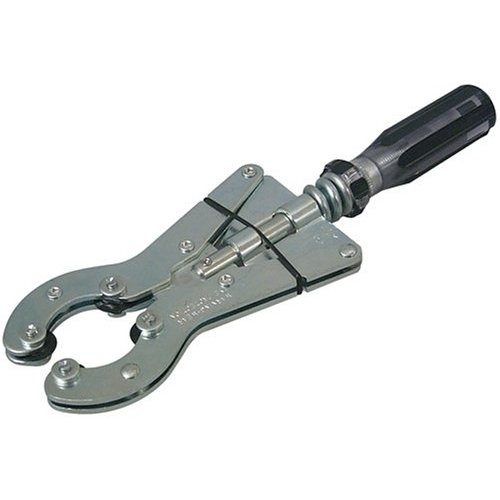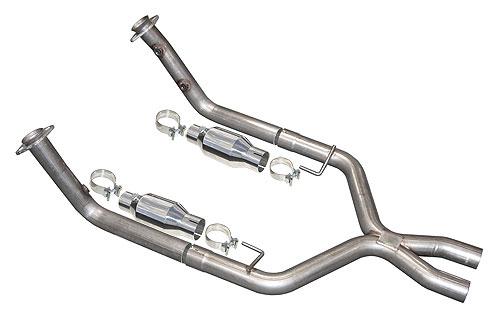IF YOU DON,T TAKE THE TIME AND EFFORT TO READ THRU THE LINKS WITH A GOOD DEAL OF USEFUL INFO, YOUR NOT GOING TO LEARN ALL THE FACTS,NECESSARY TO MAKE INTELLIGENT CHOICES
http://www.mk5cortinaestate.co.uk/calculator5.php
http://www.veryuseful.com/mustang/tech/ ... enging.pdf
http://www.wallaceracing.com/header_length.php
http://www.bgsoflex.com/bestheader.html
http://www.superchevy.com/technical/eng ... index.html
http://www.carcraft.com/techarticles/he ... usion.html
http://www.centuryperformance.com/exhau ... g-137.html
http://2.3liter.com/Calc2.htm
http://www.chevyhiperformance.com/tech/ ... index.html
http://www.antechlabs.com/K0GFM/pipechart.gif
http://www.fabshopheaders.com/header-sizing.html
http://www.wallaceracing.com/header_length.php
http://www.bgsoflex.com/auto.html
http://www.antechlabs.com/K0GFM/pipechart.gif
http://dairally.net/daihard/chas/MiscCa ... iPipes.htm
viewtopic.php?f=56&t=260
viewtopic.php?f=79&t=407&p=5393#p5393
viewtopic.php?f=56&t=1166
http://www.pontiacstreetperformance.com ... haust.html
viewtopic.php?f=56&t=185
viewtopic.php?f=56&t=1303
viewtopic.php?f=56&t=1503
viewtopic.php?f=56&t=495
viewtopic.php?f=56&t=45
http://www.enginedesigner.com/Engine_Designer_Docs.html
You'll want to keep in mind that there's two totally different routes to take here and it does matter in your choices, selected
if your designing an exhaust system there's compromises to be made
if your not running headers you'll want to balance the exhaust pipe diam. selected, so you get a large enough inside diam. to not be to restrictive , yet it needs to be small enough to maintain high enough exhaust gas velocity , that it tends to drag following exhaust pulses along with its as it exits the car/truck, obviously exhaust length, engine displacement and rpms will play a huge role in the calculations., in effect the exhaust pipe is acting as both primary and collector so it will tend to favor the low and mid rpm ranges, if its small enought to enhance low rpm torque , like most factory exhaust systems are designed to do,simply because as rpms increase the flow increases, since the exhaust diam. stays constant the pressure and volume will tend to increase, and at some point get restrictive
If you have headers the primary tube length and diam. , and collector length should ideally match the engines intended effective power band, but the exhaust pipe diam.past the collectors (which in combination with the primaries are providing the cylinder scavenging) needs to be as low in restriction too flow as you can fit under the car with noise and clearance issues taken into concern, during the selection process.
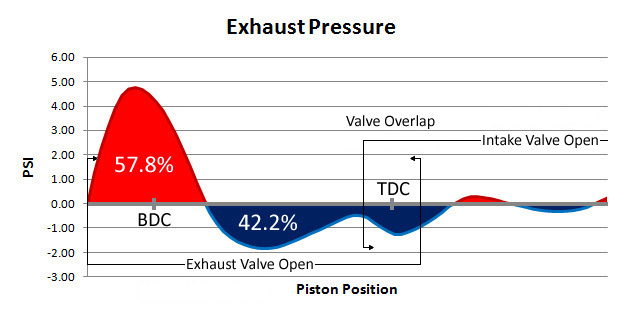

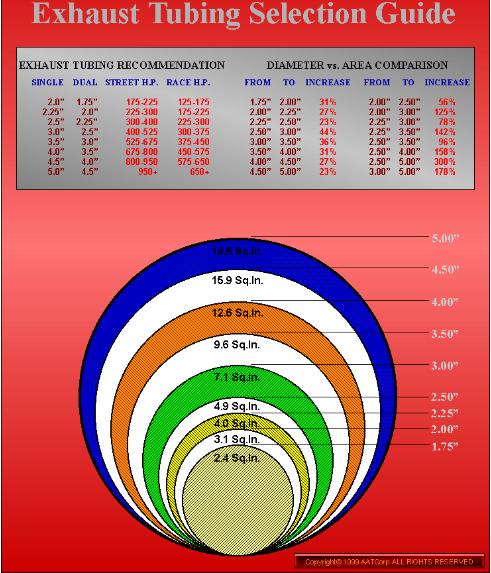
well worth reading
http://www.popularhotrodding.com/engine ... ndex1.html


the more mysterious and difficult they can make the process of intake and head porting appear, the more likely you'll think you can,t do the work, and you'll pay to get it done, it helps a great deal to understand what your doing and why and how its done but almost anyone with some research can make basic improvements that help the hp curve, you may not get the full potential a guy with experience and a flow bench could get but you can make noticeable gains, look the object is to increase VOLUMETRIC efficiency (big complicated term for effectively filling the cylinder at higher rpms), almost anything you can do to lower flow restriction without reducing port speed on the intake runners noticeably helps) but remember what goes in MUST exit also to allow the next charge to enter the cylinder so effective exhaust scavaging of the cylinders and cam timing will play a big part in the intake flow rates or lack of flow
http://forum.grumpysperformance.com/viewtopic.php?f=52&t=462&p=2833#p2833
http://forum.grumpysperformance.com/viewtopic.php?f=52&t=1740
http://forum.grumpysperformance.com/viewtopic.php?f=52&t=333
http://forum.grumpysperformance.com/viewtopic.php?f=56&t=260
most exhaust pipe is 16 gauge, or .065 wall thickness
http://www.engineersedge.com/gauge.htm
Engine Size
Horsepower
Exhaust Diameter
Single Exhaust
Dual Exhaust
150-200 CID 100 to 150 2″ to 2-1/4″ 2″
200-250 CID 100 to 200 2-1/4″ to 2-1/2″ 2″ to 2-1/4″
250-300 CID 150 to 250 2-1/2″ to 3″ 2″ to 2-1/2″
300-350 CID 200 to 350 2-1/2″ to 3″ 2-1/4″ to 2-1/2″
350-400 CID 250 to 550 3″ to 4″ 2-1/2″ to 3″
How do you judge the i.d of a pipe?
3" o.d = 2.87" diam. inside--approximately 6.5 sq inches of area
2.75 o.d = 2.62"diam. inside--approximately 5.4 sq inches of area
2.5 o.d = 2.37" diam. inside--approximately 4.4 sq inches of area
2.25 o.d = 2.12" diam. inside--approximately 3.5 sq inches of area

knowing a few constants in engine pressure and flow helps
an engine usually requires approximately 2.25 cubic feet per minute per horsepower to maximize intake flow and exhaust flow starts to become restrictive at about 115 cfm per square inch
its a rule of thumb or rough guide on the expected combined potential max exhaust port flow rates of the exhaust taken from an observed average of hundreds of recorded dyno results, and not taking into account any flow loss or restriction,and calculating some heat expansion ,its basically worthless except as a way to figuring what size exhaust pipe size thats likely to work, or what size will be restrictive to flow.
viewtopic.php?f=52&t=322
so assuming your building a 500 hp engine / 2 (divided by 2 as there's normally two header collectors on a v8) we have 250hp per header collector, (open header collectors) multiply that by 2.25 cfm and you see you need 562 cfm and divide that by 115/square inches and we see we need a 4.9 square inch minimum exhaust collector pipe, per side (open header collectors).
UNLESS you match ANY header with a TRUE low restriction exhaust its can NOT possibly work to NEAR its FULL potential, headers are designed to SCAVENGE the cylinders of oil burnt exhaust gases and INCREASE the percentage of fresh fuel air mix, if theres any significant back pressure beyond the header collectors that cuts the headers efficiency way down
http://forum.grumpysperformance.com/viewtopic.php?f=56&t=495
http://forum.grumpysperformance.com/viewtopic.php?f=56&t=3155
http://forum.grumpysperformance.com/viewtopic.php?f=56&t=1503
http://www.mk5cortinaestate.co.uk/calculator5.php
http://www.veryuseful.com/mustang/tech/ ... enging.pdf
http://www.wallaceracing.com/header_length.php
http://www.bgsoflex.com/bestheader.html
http://www.superchevy.com/technical/eng ... index.html
http://www.carcraft.com/techarticles/he ... usion.html
http://www.centuryperformance.com/exhau ... g-137.html
http://2.3liter.com/Calc2.htm
http://www.chevyhiperformance.com/tech/ ... index.html
http://www.antechlabs.com/K0GFM/pipechart.gif
http://www.fabshopheaders.com/header-sizing.html
http://www.wallaceracing.com/header_length.php
http://www.bgsoflex.com/auto.html
http://www.antechlabs.com/K0GFM/pipechart.gif
http://dairally.net/daihard/chas/MiscCa ... iPipes.htm
viewtopic.php?f=56&t=260
viewtopic.php?f=79&t=407&p=5393#p5393
viewtopic.php?f=56&t=1166
http://www.pontiacstreetperformance.com ... haust.html
viewtopic.php?f=56&t=185
viewtopic.php?f=56&t=1303
viewtopic.php?f=56&t=1503
viewtopic.php?f=56&t=495
viewtopic.php?f=56&t=45
http://www.enginedesigner.com/Engine_Designer_Docs.html
You'll want to keep in mind that there's two totally different routes to take here and it does matter in your choices, selected
if your designing an exhaust system there's compromises to be made
if your not running headers you'll want to balance the exhaust pipe diam. selected, so you get a large enough inside diam. to not be to restrictive , yet it needs to be small enough to maintain high enough exhaust gas velocity , that it tends to drag following exhaust pulses along with its as it exits the car/truck, obviously exhaust length, engine displacement and rpms will play a huge role in the calculations., in effect the exhaust pipe is acting as both primary and collector so it will tend to favor the low and mid rpm ranges, if its small enought to enhance low rpm torque , like most factory exhaust systems are designed to do,simply because as rpms increase the flow increases, since the exhaust diam. stays constant the pressure and volume will tend to increase, and at some point get restrictive
If you have headers the primary tube length and diam. , and collector length should ideally match the engines intended effective power band, but the exhaust pipe diam.past the collectors (which in combination with the primaries are providing the cylinder scavenging) needs to be as low in restriction too flow as you can fit under the car with noise and clearance issues taken into concern, during the selection process.



well worth reading
http://www.popularhotrodding.com/engine ... ndex1.html


the more mysterious and difficult they can make the process of intake and head porting appear, the more likely you'll think you can,t do the work, and you'll pay to get it done, it helps a great deal to understand what your doing and why and how its done but almost anyone with some research can make basic improvements that help the hp curve, you may not get the full potential a guy with experience and a flow bench could get but you can make noticeable gains, look the object is to increase VOLUMETRIC efficiency (big complicated term for effectively filling the cylinder at higher rpms), almost anything you can do to lower flow restriction without reducing port speed on the intake runners noticeably helps) but remember what goes in MUST exit also to allow the next charge to enter the cylinder so effective exhaust scavaging of the cylinders and cam timing will play a big part in the intake flow rates or lack of flow
http://forum.grumpysperformance.com/viewtopic.php?f=52&t=462&p=2833#p2833
http://forum.grumpysperformance.com/viewtopic.php?f=52&t=1740
http://forum.grumpysperformance.com/viewtopic.php?f=52&t=333
http://forum.grumpysperformance.com/viewtopic.php?f=56&t=260
most exhaust pipe is 16 gauge, or .065 wall thickness
http://www.engineersedge.com/gauge.htm
Engine Size
Horsepower
Exhaust Diameter
Single Exhaust
Dual Exhaust
150-200 CID 100 to 150 2″ to 2-1/4″ 2″
200-250 CID 100 to 200 2-1/4″ to 2-1/2″ 2″ to 2-1/4″
250-300 CID 150 to 250 2-1/2″ to 3″ 2″ to 2-1/2″
300-350 CID 200 to 350 2-1/2″ to 3″ 2-1/4″ to 2-1/2″
350-400 CID 250 to 550 3″ to 4″ 2-1/2″ to 3″
How do you judge the i.d of a pipe?
3" o.d = 2.87" diam. inside--approximately 6.5 sq inches of area
2.75 o.d = 2.62"diam. inside--approximately 5.4 sq inches of area
2.5 o.d = 2.37" diam. inside--approximately 4.4 sq inches of area
2.25 o.d = 2.12" diam. inside--approximately 3.5 sq inches of area

knowing a few constants in engine pressure and flow helps
an engine usually requires approximately 2.25 cubic feet per minute per horsepower to maximize intake flow and exhaust flow starts to become restrictive at about 115 cfm per square inch
its a rule of thumb or rough guide on the expected combined potential max exhaust port flow rates of the exhaust taken from an observed average of hundreds of recorded dyno results, and not taking into account any flow loss or restriction,and calculating some heat expansion ,its basically worthless except as a way to figuring what size exhaust pipe size thats likely to work, or what size will be restrictive to flow.
viewtopic.php?f=52&t=322
so assuming your building a 500 hp engine / 2 (divided by 2 as there's normally two header collectors on a v8) we have 250hp per header collector, (open header collectors) multiply that by 2.25 cfm and you see you need 562 cfm and divide that by 115/square inches and we see we need a 4.9 square inch minimum exhaust collector pipe, per side (open header collectors).
UNLESS you match ANY header with a TRUE low restriction exhaust its can NOT possibly work to NEAR its FULL potential, headers are designed to SCAVENGE the cylinders of oil burnt exhaust gases and INCREASE the percentage of fresh fuel air mix, if theres any significant back pressure beyond the header collectors that cuts the headers efficiency way down
http://forum.grumpysperformance.com/viewtopic.php?f=56&t=495
http://forum.grumpysperformance.com/viewtopic.php?f=56&t=3155
http://forum.grumpysperformance.com/viewtopic.php?f=56&t=1503
Last edited by a moderator:

